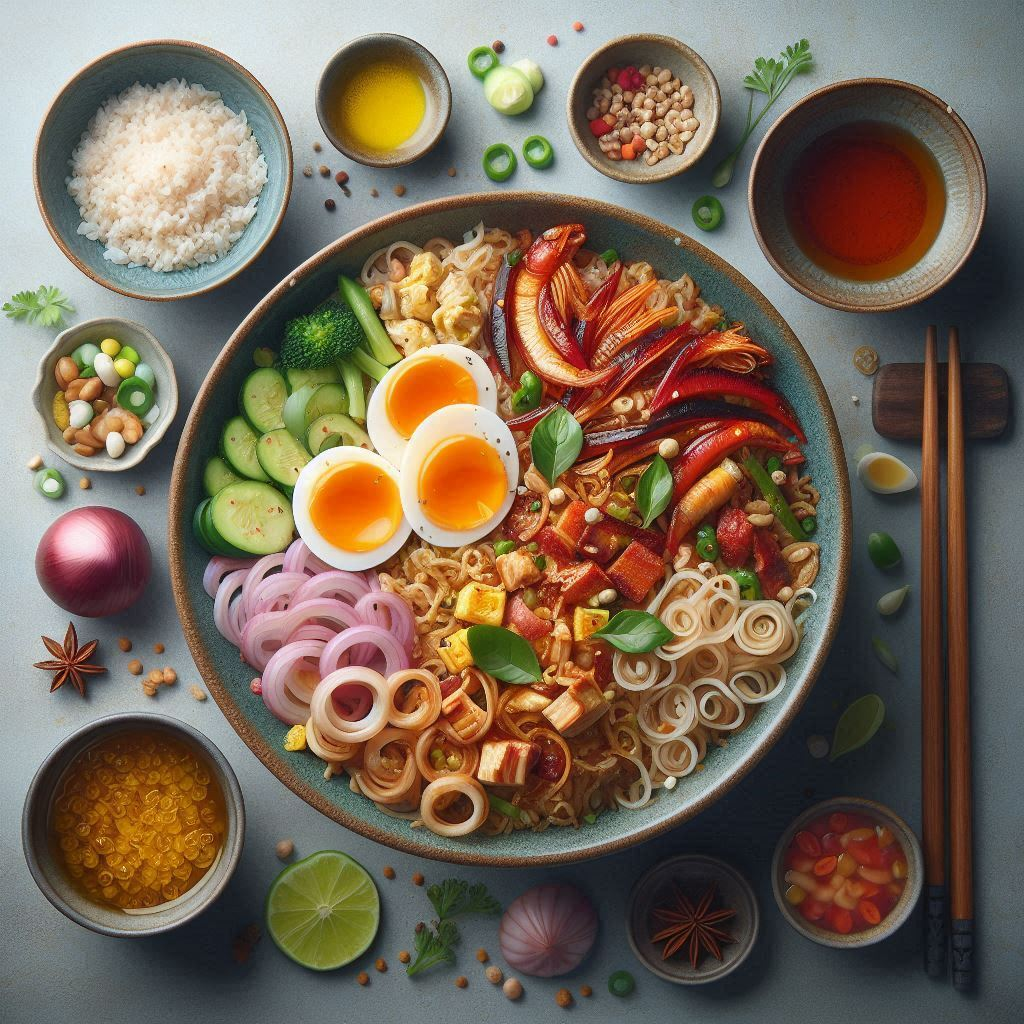
A Journey Through Time: Exploring the History and Preparation of Khao Pad
Khao Pad, the beloved Thai fried rice, is more than just a simple dish. It’s a culinary tapestry woven with history, tradition, and the vibrant flavors of Thailand. Let’s embark on a journey to uncover the secrets of this iconic dish, from its humble beginnings to its modern-day popularity.
A Culinary Fusion: The Origins of Khao Pad
The origins of Khao Pad can be traced back to 19th century Thailand, a period marked by significant cultural exchange with the West. While the exact origins remain shrouded in mystery, it’s widely believed that Khao Pad emerged as a fusion of Thai rice cooking techniques and the influence of Chinese stir-fry methods, which were introduced by Chinese immigrants during this time.
The dish’s name itself, “Khao Pad”, literally translates to “fried rice” in Thai, reflecting its simple yet flavorful essence.
The Evolution of a Classic: Khao Pad Through the Decades
Khao Pad’s journey from a simple street food to a culinary staple is a testament to its adaptability and enduring appeal. Initially, it was a humble dish prepared with basic ingredients like rice, soy sauce, and leftover meats or vegetables. However, over the years, Khao Pad evolved, incorporating a wider range of ingredients and flavors, reflecting the diverse culinary landscape of Thailand.
The Art of Khao Pad: A Culinary Masterpiece in Every Bite
Preparing Khao Pad is a symphony of textures and flavors. Here’s a glimpse into the art of creating this culinary masterpiece:
1. The Rice: The Foundation of Flavor
The foundation of Khao Pad is Jasmine rice, known for its fragrant aroma and fluffy texture. The rice is typically cooked beforehand and allowed to cool, ensuring that it doesn’t become mushy during stir-frying.
2. The Wok: A Culinary Canvas
The wok, a versatile cooking tool, is essential for Khao Pad. Its curved sides and wide base allow for even heat distribution, ensuring that the rice is cooked evenly and develops a slightly crispy texture.
3. The Ingredients: A Symphony of Flavors
Khao Pad is a blank canvas for culinary creativity. Common ingredients include:
- Protein: Chicken, pork, shrimp, or tofu
- Vegetables: Onions, garlic, scallions, carrots, and peas
- Seasonings: Soy sauce, fish sauce, oyster sauce, and chili flakes
- Flavor Enhancers: Eggs, lime juice, and sugar
4. The Technique: Stir-Frying to Perfection
The key to a perfect Khao Pad lies in the stir-frying technique. The ingredients are quickly cooked in the hot wok, ensuring that they retain their freshness and vibrant flavors. The rice is added last, coated in the flavorful sauce, and tossed until it’s heated through and slightly crispy.
5. The Garnish: A Final Touch of Elegance
A sprinkle of fresh cilantro, a squeeze of lime juice, and a dollop of Sriracha add a final touch of freshness and spice to the dish.
Beyond the Plate: Khao Pad’s Cultural Significance
Khao Pad is more than just a dish; it’s a reflection of Thai culture. It’s a comfort food enjoyed by people of all ages and social classes. It’s also a versatile dish that can be adapted to suit different tastes and dietary needs.
A Culinary Legacy: Khao Pad’s Enduring Appeal
Khao Pad has transcended borders and become a global culinary phenomenon. Its simple yet flavorful profile, coupled with its adaptability and versatility, has made it a beloved dish around the world. Whether enjoyed as a quick and easy meal or a more elaborate culinary creation, Khao Pad continues to delight taste buds and capture hearts.



